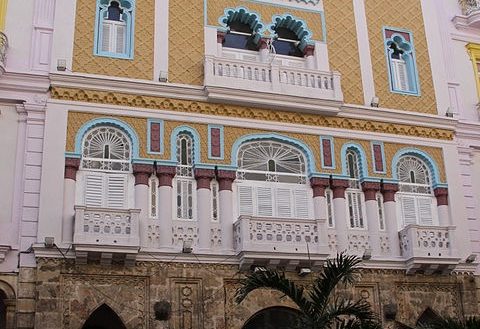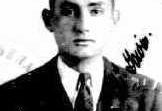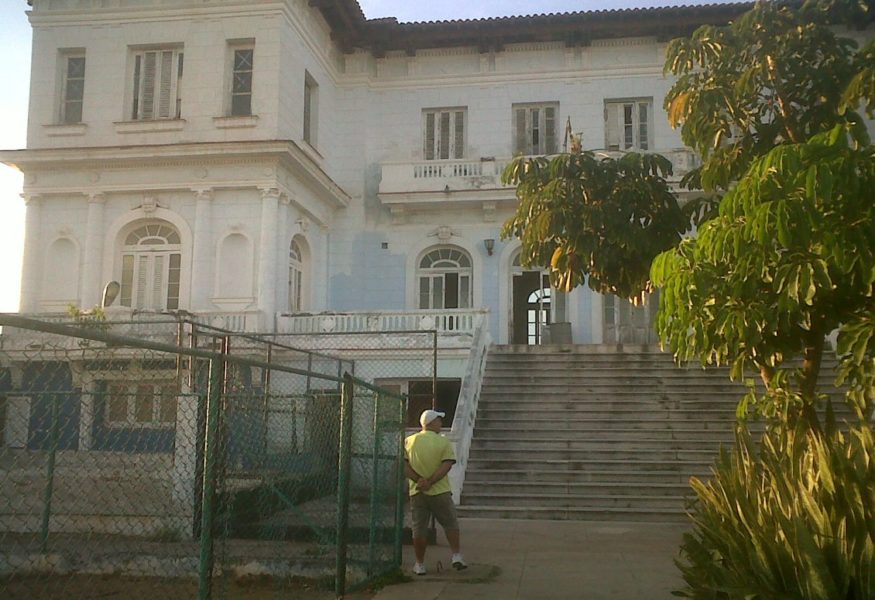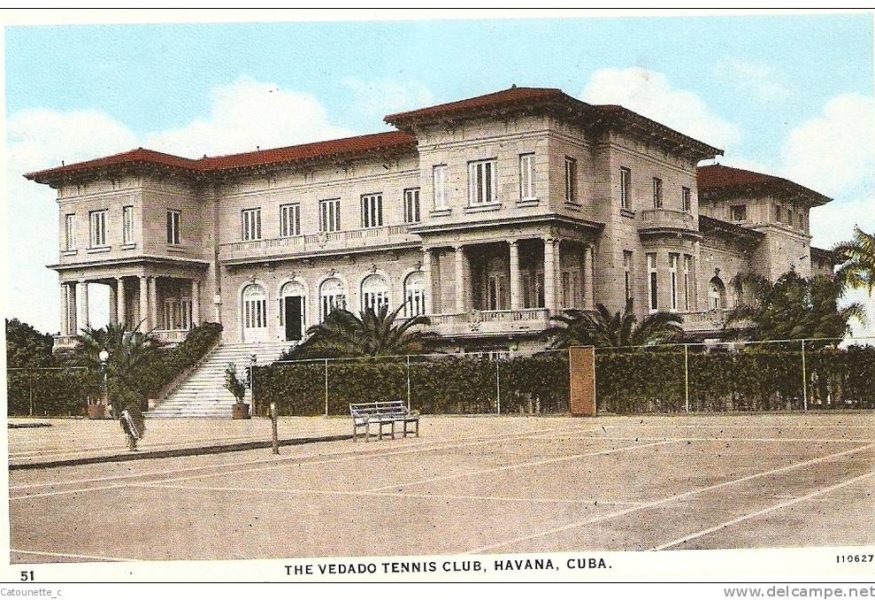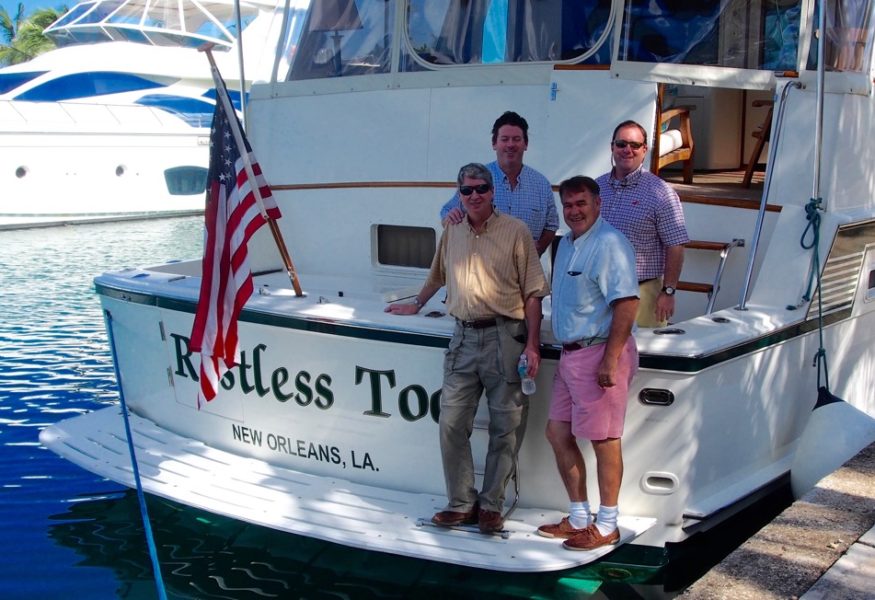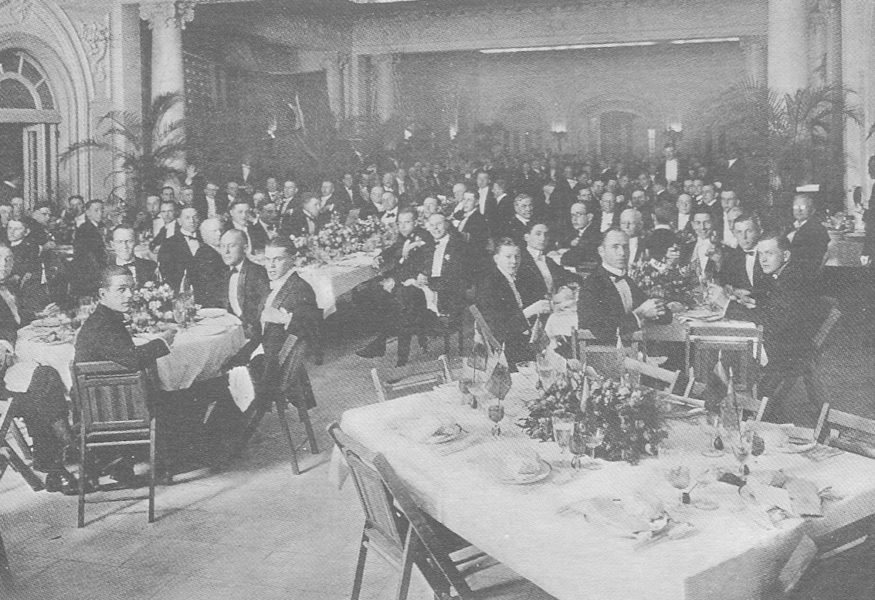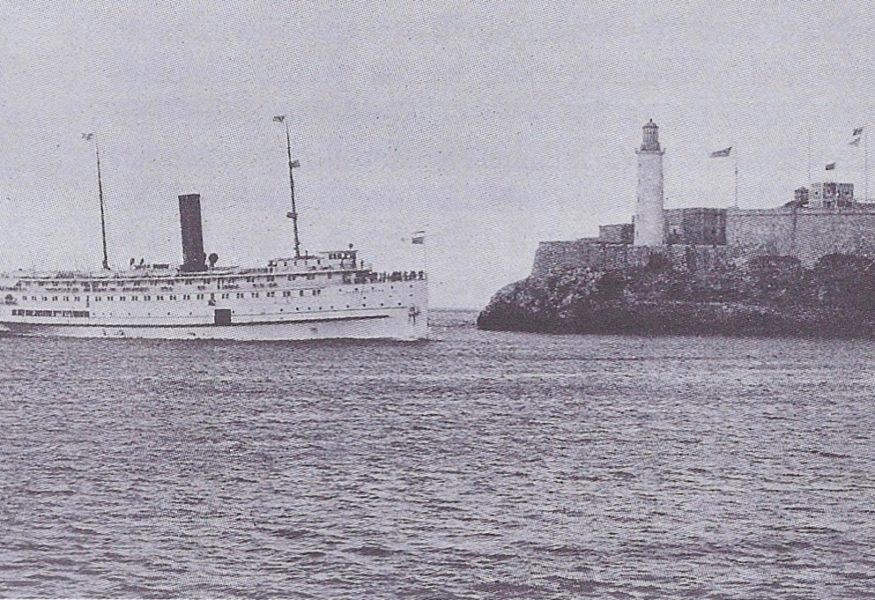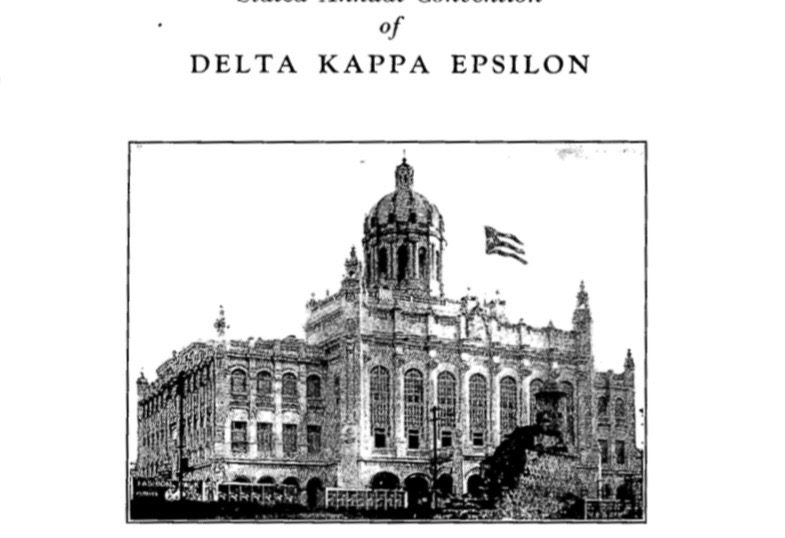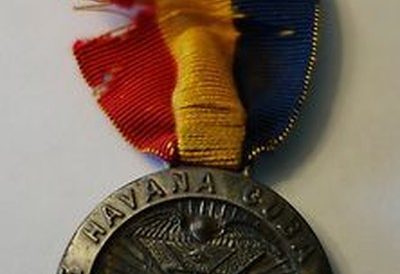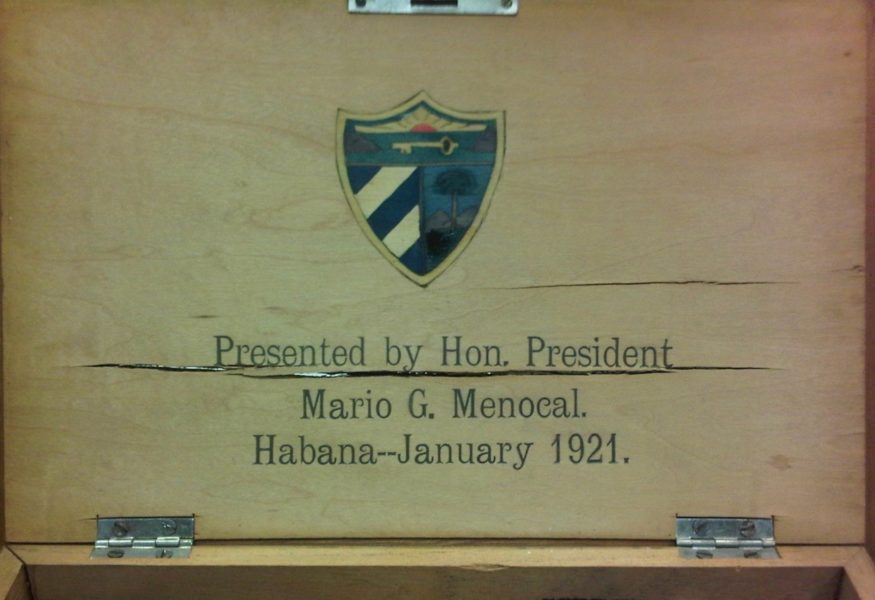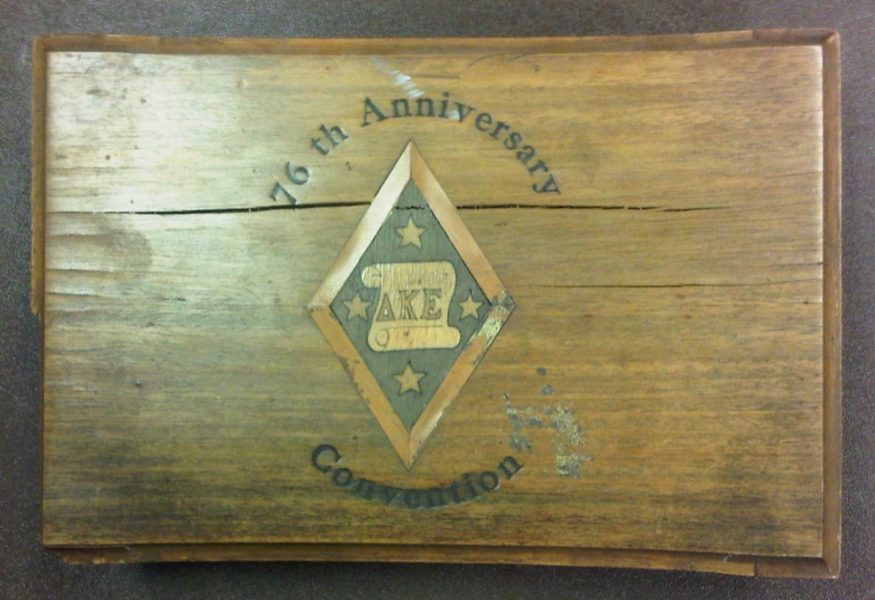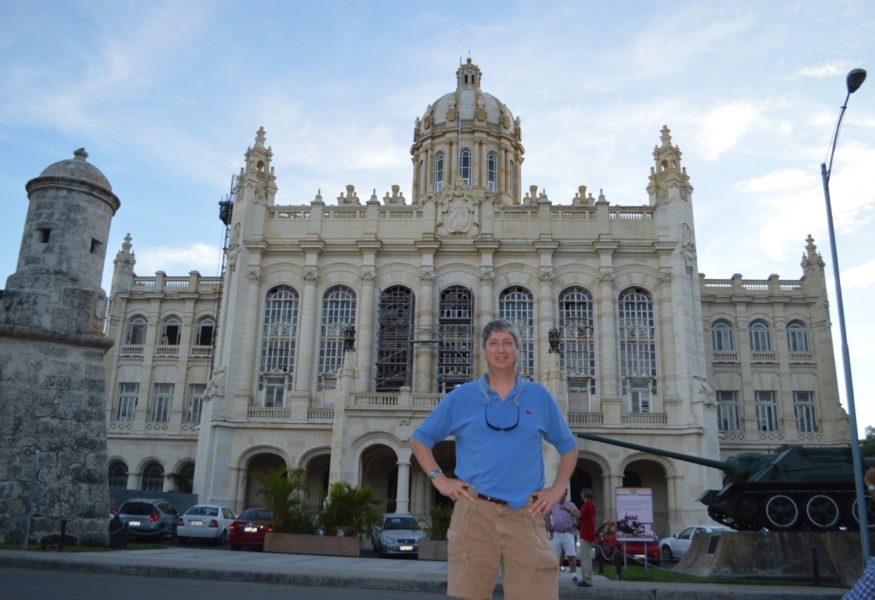From the Historian – Winter 2016
PSI ALUMNI HISTORIAN’S REPORT
Winter 2016
By T. Semmes Favrot
“A Party in Paradise”
1920 DKE Convention- Havana, Cuba
During the Christmas holidays of 1920, 250 DKEs from all over North America, along with a number of their wives, converged on Key West, Florida. A large number of them boarded a Cuban warship that had been sent there from the Cuban capital of Havana at the behest of Cuban President Mario Garcia Menocal, Delta Chi Cornell DKE, 1888. Others in attendance boarded the coastal steamer Governor Cobb and, after raising the DKE flag on the ship’s mast, set sail for Cuba. The 76th Annual DKE Convention was to be held in Havana over the next several days, “as 1920 went out and 1921 came in,” hosted by President Menocal himself, who, a year earlier, had personally invited the DKE brotherhood to hold its annual convention in his country, “the Pearl of the Antilles.”
This was the first time that any North American fraternity had ever held a national (or international, in the case of DKE) convention outside of the continental mainland, and the event attracted much attention from the general public and the press in the United States, Canada and Cuba. This was also the era of Prohibition, which went into effect less than a year before the convention on January 17, 1920, and some cynics floated the preposterous (?!?!) idea that the real reason the DKEs went to Cuba was so that they could circumvent Prohibition and consume alcohol at their convention during the festive holiday season. Why would anyone accuse DKEs of doing such a thing? A 1921 entry in the DKE Quarterly states:
Of course a lot of explaining was necessary in the case of some of those suspicious friends who saw, or pretended to see, a case of cause and effect in recent constitutional tinkering [i.e. the passage of national Prohibition] and a trip of college men to a wet island. It was difficult to convince some of our rivals, whose hearts were overflowing with envy, that we were not of those who now consider the United States as a vast and arid desert bounded on the south by an oasis called Havana and on the north by one called Montreal.
A New York Times article about the Convention, “D.K.E. Men Off For Cuba,” published December 27, 1920, stated:
“More than 150 members and officers of Delta Kappa Epsilon left the Pennsylvania Station in a special train last night to visit Cuba at the invitation of Cuban officials, and to attend the seventy-sixth annual convention of the fraternity at Havana. Special trains from other cities will carry delegates, undergraduate members, alumni and guests. All the trains will meet at Savannah, where there will be a reunion of members as guests of Mayor M. M. Stuart and other city officials. Part of the entertainment for the visitors will be an old-fashioned barbeque.
President Menocal of Cuba is a graduate member of the Cornell Chapter of the fraternity. He heads the committee arranging for the visit of the Americans, and will provide a Cuban warship to convey the delegates and officers from Key West to Havana. Steamers are to be provided for others and airplanes are to make round trips with passengers. The convention banquet and the President’s annual ball and reception at the palace are to conclude the visit. The delegates are due at Havana on Dec. 30.”
Trains loaded with DKEs left from New York, Chicago, Atlanta, and elsewhere, and the brothers initially convened in Savannah, as stated, where a large group of DKEs from the South and Midwest met up with those coming from points north. From there, more trains took the DKEs to Key West, from where the waiting Cuban navy warship, steamer, and apparently, even airplanes, then still quite a novelty, took them, like visiting heads of state, on the 90-mile voyage to Havana. Once in Havana, the DKEs checked into hotels, and the convention then got underway.[1] The entire second floor of the luxurious Hotel Sevilla, a “famous branch of the Biltmore of New York,” was secured to accommodate DKEs, and served as the headquarters of the convention. Double rooms with private baths could be had there for $9.75 per person per day.[2]
The Psi chapter was represented at the Havana convention by undergraduate brothers Robert Hurter Bromberg ‘21, as a delegate, and Earl Mason McGowin ‘22, as an alternate delegate. The Convention Minutes do not show the names of alumni in attendance, so it is possible that one or more Psi alumni were in Havana as well. It seems likely that brothers Bromberg and McGowin took trains to Savannah to meet up with the larger DKE contingent, and then went south to Key West with them as a group.
Brother Bromberg was a proud DKE who spoke fondly of his time at the Havana convention, according to his daughter, Jane Byrne of Birmingham, Alabama. He was born in Mobile and moved with his family at a young age to Birmingham, where he lived the rest of his life, and was one of several Bromberg family members who were Psi DKEs. Ms. Byrne believes that her mother, Margaret, was one of the wives who accompanied her husband on the trip to Havana. Brother Bromberg subsequently engaged in the jewelry business, a business still thriving in Birmingham today. He passed away in September 1956.
The 1926 DKE Catalogue shows Brother McGowin as a native of Brewton, Ala., studying at Pembroke College, Oxford, England. On December 2, 1920, he applied for a U. S. passport in Tuscaloosa, listing his intended foreign destination as “Cuba,” the purpose of his travel as “Fraternity Convention,” and his intended port and date of departure as Key West on December 28, 1920. His passport application was attested to by well-known Psi alumnus and longtime “house father” “Uncle Tom” Garner. Brother McGowin was a cousin of brother Nicholas Stallworth, Psi 1858, who served in the Confederate army and was present with General Robert E. Lee at the surrender of Lee’s army at Appomattox Court House in April 1865 (see “Psi at Appomattox, April 1865,” Sighs of Psi, Summer 2015, page 6).[3] Brother McGowin died in June 1992.
Shortly after arrival in Cuba, a delegation of fifty brothers went to the Cuban Presidential Palace to pay respects to brother Menocal. Because of the president’s personal involvement with the convention, the gathering became an event of international interest, and each day English and Spanish language newspapers devoted front-page stories to the delegates’ activities. DKEs were given red-carpet treatment throughout their stay, and enjoyed socializing with Havana’s elite. Activities included tours of the island, a DKE versus Cuban Athletic Club basketball game, gambling at the quaintly named Palace of Chance, newly constructed of marble, and a memorable New Year’s Eve celebration. The actual “convention business” took place at the Presidential Palace, the residence of President Menocal. The convention banquet was held at the prestigious Vedado Tennis Club, and, along with a Grand Ball and reception at the Presidential Palace, provided the grand finale for the convention.
In mid-December 2015, your humble correspondent had the pleasure of traveling by boat with three friends from Key West to Havana, following, almost exactly 95 years later, the same route followed by the DKE-laden Cuban warship and the steamer Governor Cobb of December 1920. Our 63’ Hatteras yacht, the Restless Too, owned by Jim Huger, reached Cuban waters early on the morning of December 15th. As we approached the island, the thing that struck us most was the complete absence of watercraft of any kind- no fishing boats, no sailboats, no skiffs, no rowboats, no commercial vessels- NOTHING. Pretty odd for an island nation. We found out later that watercraft of any kind are virtually impossible to obtain and/or operate in Cuba, because the communist Cuban government fears (rightfully) that such vessels will inevitably be pointed to Florida and freedom. So much for life in a “workers’ paradise.”
After a surprisingly easy time getting through Cuban customs (the Castro government craves U. S. dollars, so is very welcoming to Americans, despite over a half-century of official hostility), we moored at the Marina Hemingway (named for famous American author Ernest Hemingway, who lived on and off in Cuba) in Havana. I was now on the trail of the 1920 convention. Our English-speaking Cuban guides were very educated, surprisingly sophisticated, and quite open in their disdain for the Castro regime. I asked about the former Presidential Palace, where President Menocal hosted our brothers on their 1920 visit. “That’s now the Museum of the Revolution,” our guide, Humberto, said; “I’ll take you there.”
We headed for Old Havana, and arrived at the Presidential Palace/Museum of the Revolution, which I quickly recognized from old photos I’d seen (see photo). Notice the army tank on the right side of the photo, incongruously parked in front of this majestic old building. The Museum itself is about what you would expect: a shrine to the Castro brothers and their cronies. If communist propaganda, spun out in turgid, mind-numbing prose, is your thing, this is the place for you. At any event, I got to see, first-hand, the main site of the 1920 DKE Convention, perhaps the most famous DKE convention ever.
Our guides were also very familiar with the El Vedado neighborhood of Havana, but had never heard of the Vedado Tennis Club, site of the 1920 convention’s grand finale banquet, so I was disappointed that I would not get to see it, though I suspected that such a fancy tennis club was probably an early casualty of the communist revolution of the late 1950’s. However, upon my return home and in preparing this article, I discovered that we had passed the impressive Vedado Tennis Club building several times, while driving from our berth at Marina Hemingway east into central Havana (see photos). The building is located along Havana’s “Embassy Row,” a fairly upscale area of El Vedado where numerous foreign embassies are located. Our guides had pointed the building out to us as we passed through El Vedado, without realizing that it was the former Vedado Tennis Club about which I had inquired. It was notable for being a large and impressive, but seemingly empty, building in the middle of an area otherwise dominated by the gleaming embassies of various countries.
As I suspected, the Vedado Tennis Club had been nationalized by the Castro government after the revolution, and then dissolved in 1959. Far more than just a tennis club, as the name implies, it was a leading social club for Havana’s elite from 1902-1958, frequented by, among others, Brother Menocal.[4] It seems likely that he was also a member, which would help explain how the DKE banquet came to be held there. The building is now apparently more or less abandoned, and only one of its tennis courts is still operational, the others now crumbled, overgrown with weeds, or both.[5]
The official souvenir of the 76th DKE convention was a gift from President Menocal to each of those in attendance. It was described by Brother John Clair Minot, Theta Bowdoin 1898 (whose name should be familiar to Sighs of Psi readers as the author of the poem “Brothers in DKE,” which has been the subject of several recent Sighs of Psi articles) as a beautifully inlaid wooden box containing 25 “of the best cigars made in Cuba.” The boxes were made especially for the DKEs, and the cover bore the design of the DKE pin, inlaid in woods of different colors (see photo). Only 300 of these boxes were made, and only four are still known to still presently exist. One was sold at auction on EBay in April 2014 for $4,150.00!
An even rarer relic of the 1920 Havana convention is a medal presented by the DΚΕ Council (see photo), which was sold at an online auction in January 2013. It features, on the front, a medallion with the words “Havana Cuba” around the top edge, “Delta Kappa Epsilon” along the bottom, and the year “1920,” all surrounding the DKE crest. The medallion is suspended on a ribbon featuring the “gules, azure and or” DKE colors, and the following inscription appears on the back: “From the Council of DΚΕ in recognition and appreciation of your courtesy and hospitality.”
Cuba is starting to change fast, so I’m glad I got to see it in its present state, largely frozen in time in so many ways for over half a century. We found little enthusiasm for the Castro regime among the many people we met, so hopefully that regime will end, peacefully, with the passing of those aging despots. Then, maybe we can make some real headway in resurrecting the ghosts of the 76th Annual DKE Convention of 1920, which has been called “a party in paradise.”
Special thanks to brother Grant Burnyeat, Phi Alpha British Columbia 1965, Chairman of the History and Archives Committee of DKE International, for his usual generous assistance with the preparation of this article, and to Jim Huger for his hospitality and generosity in hosting us aboard the Restless Too on our voyage to Cuba in December 2015. Thanks also to Doug Lanpher, Gamma Vanderbilt ’77, Executive Director of DKE International, and Lee Hurley, Psi ’82, for their assistance, as well as to Murray Calhoun, Lee Finkelstein, Ricky Bromberg, Jane Byrne, Dr. Marna Williams, and to our Cuban guides, Humberto and Carlos. Finally, thanks to Brother Rob “Catfish” Clark, Psi ’83, for his valuable critique and input on this article while we were en route to witness the Crimson Tide win its 16th National Championship in football with a 45-40 victory over Clemson in Glendale, Arizona, on January 11, 2016. ROLL TIDE!
UPDATE ON EDWIN ROGERS AND THE UNKNOWN PSI: Our research on identifying the Unknown Psi from the famous poem “Brothers in DKE” continues, and includes a return research trip to Maine this past Fall. Stay tuned for more in the next Sighs of Psi.
In the Bonds,
Semmes Favrot ‘82
New Orleans, La.
Alumni Historian
[1] See A Century and a Half of DKE- The Illustrated History of Delta Kappa Epsilon, pages 47-49, and “This Week in DKE History,” entry for December 26, 1920, http://www.dke.org/this-week-in-dke-history/2014/12/22/this-week-in-dke-history-december-22nd-december-28th.
[2]“Havana Calls,” flyer for the 1920 DKE convention, Psi chapter archives.
[3] http://www.epageflip.net/i/543851-summer-2015-newsletter
[4] See the Cuban government’s EcuRed website- www.ecured.cu/Vedado_Tennis_Club.
[5] See “Notes on the Americas,” https://notesontheamericas.wordpress.com/tag/cuban-tennis/.
